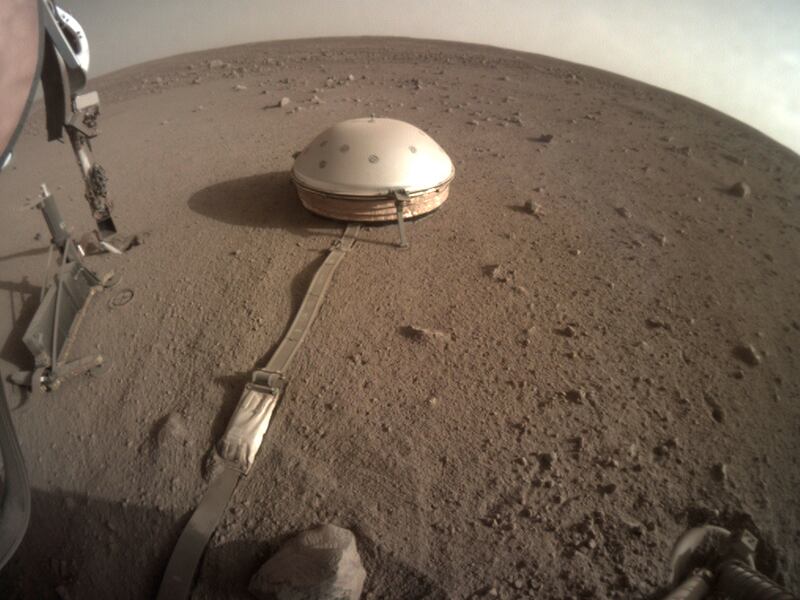NASA’s InSight lander, an unmanned craft that has been gathering information on the surface of Mars since 2018, has become caked in so much dust that its solar panels are unable to harness the energy the lander needs to stay operational.
Business Insider reports that the lander is located on a portion of the red planet known as the Elysium Planitia. Powerful gusts of wind that normally pass through the area have not been sweeping through to clean off the panels.
According to The Hill, the rover itself is still in functioning condition at the moment, but it’s at risk of suffering a fatal power failure if its batteries aren’t charged relatively soon. If the lander’s batteries die, so will the lander.
To address this issue, NASA has incrementally shut off several instruments on the InSight lander, The Hill reports. Soon, the lander will transition into hibernation mode and it will stay in that setting until July 2021 when the red planet is positioned closer to the sun.
“The amount of power available over the next few months will really be driven by the weather,” said InSight’s project manager Chuck Scott (via ScienceAlert.com).
Bruce Banerdt, the InSight lander’s principal investigator, added, “We would be hopeful that we’d be able to bring it back back to life, especially if it’s not asleep or dead for a long period of time. ... But that would be a dicey situation” (via ScienceAlert.com).
Business Insider reports that, if the lander can survive the Martian winter without completely draining its power, the InSight will be back in action charting quakes and tracking weather on the red planet in 2022.
According to ScienceAlert.com, NASA’s InSight lander has detected over 500 quakes and registered more than 10,000 dust devils since arriving on the Mars in 2018.

